Exploring Dubai's Urban Tech District for Growth
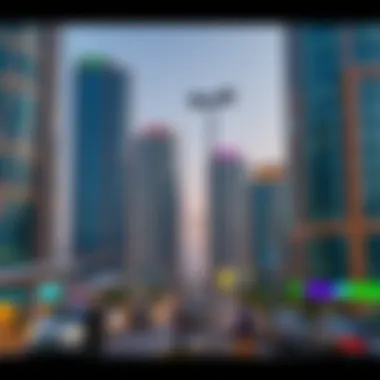
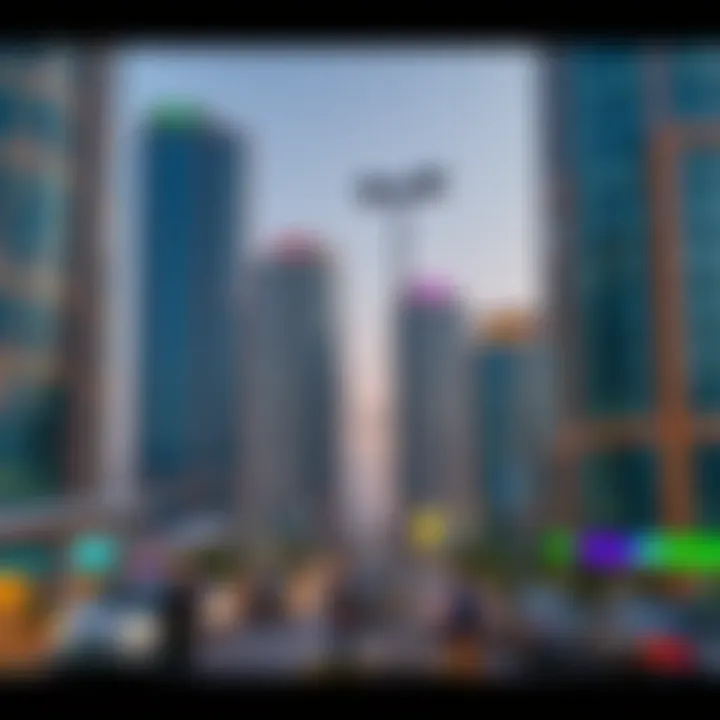
Intro
Dubai's Urban Tech District is not just another piece of real estate; it's a bold vision for the future of urban living. Rooted in the heart of the desert, this initiative seeks to weave technology seamlessly into the fabric of daily life. Think about it—a place where cutting-edge smart tech meets traditional urban development, aimed at creating a sustainable environment. The district promises to be a game-changer, not just for Dubai, but for cities globally that aim to integrate innovative solutions into their planning processes. By looking into the depths of this initiative, we can uncover the potential it holds for real estate investments, economic growth, and urban revitalization.
Since its inception, this venture has attracted a diverse audience—real estate agents, prospective investors, and homebuyers—all keen on understanding how this district will redefine opportunities in the property market. In this exploration, we’ll dissect its implications on the urban landscape, revealing how technology can shape everything from residential options to expansive commercial spaces. Let's delve into what the Urban Tech District has in store, both for its immediate community and for the broader scopes of urban development in the future.
An Overview of the Dubai Urban Tech District
The concept of the Dubai Urban Tech District is increasingly becoming a focal point in discussions surrounding urban development and innovation. This district is more than just a mix of residential, commercial, and technological spaces; it embodies a vision for the future of urban living. By exploring this district, we gain insights into how urban life can be enhanced through technology, ultimately meeting the ever-evolving needs of its inhabitants.
At its core, the Dubai Urban Tech District serves as an experimental ground for smart city technologies. It integrates cutting-edge innovations that aim to improve efficiency, sustainability, and overall quality of life. Key elements such as smart transportation, energy-efficient buildings, and interconnected public services showcase how technology can streamline everyday urban challenges.
Moreover, this district holds significant potential benefits for various stakeholders, particularly real estate agents, investors, and homebuyers. For real estate agents, the Urban Tech District presents an array of opportunities to showcase properties that incorporate advanced technological features. Investors can find promising prospects in a locale that is likely to see increased demand as urban tech becomes a standard expectation rather than a luxury. Homebuyers, on the other hand, will appreciate the amenities and enhanced lifestyle that come with living in an area designed around modern conveniences and sustainable practices.
In the following sections, we will dive deeper into the specifics of what defines the urban tech concept and examine the historical context and development timeline of the Dubai Urban Tech District, both of which will lay the groundwork for understanding its current and future impact.
Defining the Urban Tech Concept
The term "urban tech" refers to the intersection of technology and urban planning, where digital solutions are applied to enhance city living. In the context of the Dubai Urban Tech District, this means using a combination of data, technology, and connectivity to respond effectively to urban challenges.
Essentially, urban tech encompasses several interconnected themes:
- Smart Systems: These include intelligent transportation systems, energy grids, and waste management that utilize data analytics for optimization.
- Data-Driven Policies: Local governments can leverage data collected from urban tech initiatives to inform policymaking and improve public services.
- Sustainability: Sustainable practices are at the forefront of urban tech, promoting the responsible use of resources while minimizing environmental impact.
Historical Context and Development Timeline
The establishment of the Dubai Urban Tech District didn't happen overnight. It is rooted in a series of strategic decisions and advancements in urban planning over the years.
- Early 2000s: Dubai sets the foundation for urban innovation when it realizes the potential of integrating technology into city planning.
- 2014: The Dubai Smart City initiative was launched, focusing on enhancing city living through technology.
- 2018: Groundbreaking for the Urban Tech District marks a significant milestone, showcasing Dubai's ambition to be a global leader in smart urban solutions.
- 2023: The district is set to evolve further, experimenting with new technologies and refining existing systems to better serve its residents.
In summary, the Dubai Urban Tech District is a pioneering undertaking that symbolizes a shift toward a more integrated and efficient urban life. Each element of this initiative not only contributes to a smarter city but also holds considerable implications for real estate dynamics and the overall urban experience.
Technological Innovations Shaping the District
The Dubai Urban Tech District is not just a collection of high-rise buildings and cutting-edge amenities; it represents a paradigm shift in how technology integrates with urban living. To comprehend the potential of this initiative, it's essential to explore the intricate web of technological innovations that are shaping the district.
Smart City Framework and Implementation
At the heart of the Urban Tech District lies the Smart City framework. This concept encompasses various systems designed to enhance the quality of life for residents while ensuring the sustainability of resources. Imagine a city where traffic flow is monitored and managed by AI, reducing congestion and pollution. This is not just a pipe dream - it’s happening right here in Dubai.
- Integration of IoT devices: Numerous sensors throughout the district collect real-time data, which helps in optimizing city services such as waste management and public transportation.
- Green Buildings: Structures designed to be energy-efficient contribute to a lower carbon footprint. For instance, the use of smart meters allows residents and businesses to monitor energy usage and reduce wastage.
"Smart cities are about putting technology in service of the people, not the other way around."
By embracing a comprehensive smart city framework, the Urban Tech District not only aims for modernization but creating a model that can be replicated in other urban environments.
Sustainable Infrastructure Initiatives
Across the Urban Tech District, sustainability is woven into the fabric of the infrastructure. The innovations focus on minimizing the environmental impact while maximizing efficiency.
- Renewable Energy Sources: Solar panels are installed on various rooftops, not just for aesthetic appeal but to harness the sun’s power, significantly reducing reliance on fossil fuels.
- Green Spaces: Urban parks with native vegetation provide recreational areas while promoting biodiversity. These spaces help in cooling the urban environment and improving air quality.
To really grasp the impact, consider that cities contribute to more than 70% of global carbon emissions. Initiatives taken in the Dubai Urban Tech District are stepping stones toward reversing these trends, showing that urban living doesn’t have to come at the expense of the planet.
Data-Driven Decision Making
In a world driven by information, the Arab city is leveraging data analytics to make decisions that affect everything from resource allocation to emergency response. This goes beyond mere technological advancement; it's about creating a culture of informed choices.
- Real-time Data Analysis: Municipal bodies have the tools to measure how much water is consumed in a neighborhood daily, adjusting policies accordingly.
- Predictive Analytics: By utilizing historical data, planners can forecast potential issues, allowing preemptive measures to avoid crises like flooding or energy shortages.
Not long ago, urban planning often relied on historical data and educated guesses. In contrast, data-driven decision-making introduces predictive models that inform better planning and operational efficiency.
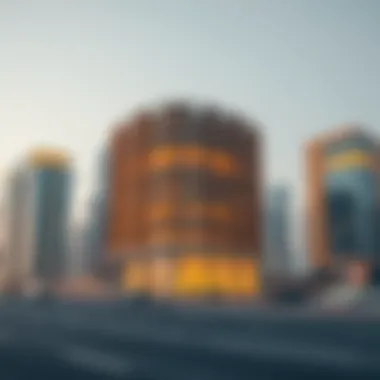
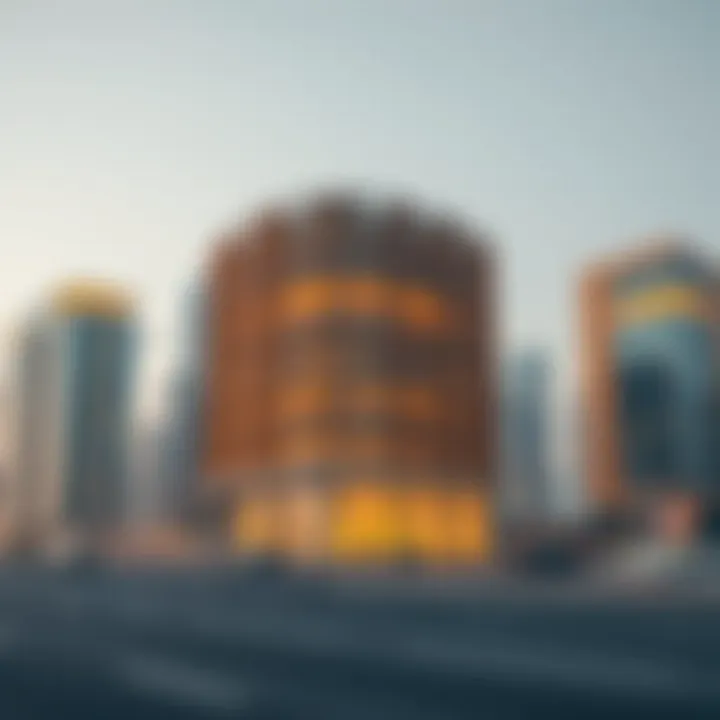
In short, the technological fabric of the Dubai Urban Tech District is both innovative and forward-thinking. It exemplifies a new era of urban living where technology plays a crucial role in shaping cities for future growth while ensuring benefits for both residents and the environment.
Impact on Real Estate Development
The Dubai Urban Tech District is reshaping the real estate landscape, presenting a range of new opportunities and challenges for various stakeholders. Infused with cutting-edge technology, this district not only enhances the urban experience but also redefines property dynamics in the Emirate. The integration of advanced infrastructure promises to boost property values, attract businesses, and create vibrancy within the community. In this section, we explore how these shifts manifest in emerging property trends, the prospects for both residential and commercial sectors, and the investment opportunities that arise from this technological transformation.
Emerging Property Trends
As the Urban Tech District unfolds, a few notable trends are emerging in the property sector. For one, there’s a noticeable uptick in the demand for smart homes, which are equipped with IoT (Internet of Things) devices that enhance convenience and energy efficiency. Properties incorporating solar energy solutions and cutting-edge security systems are gaining traction among buyers who prioritize sustainability and safety.
Moreover, mixed-use developments are rising in popularity. Buyers and tenants are increasingly drawn to spaces where they can live, work, and play all within close proximity. This trend reflects a broader shift towards urban living that incorporates elements of community while promoting reduced reliance on transportation.
- Investment in Smart Technologies: Developers are incorporating AI to manage energy usage, enhancing resource efficiency.
- Flexible Workspaces: The rise of remote work has fueled demand for adaptive office spaces that can switch from collaborative areas to private work zones.
Such trends are indicative of a market adapting to changing lifestyles and preferences, echoing the broader societal shift towards tech integration in daily life.
Residential and Commercial Prospects
The blend of technology and architecture is set to redefine both residential and commercial property prospects. On the residential front, potential buyers find allure in homes that promise advanced conveniences and sustainable living. Buildings featuring energy-efficient materials and smart climate control systems are hot sellers.
For commercial properties, the demand is equally robust. As startups and established companies seek to stake their claim in this tech-forward district, there is a forecasted rise in demand for flexible office spaces. Businesses are more inclined to invest in locations that promote innovation and offer a vibrant community atmosphere.
- Smart Logistics Facilities: These are becoming essential as e-commerce continues to grow, requiring efficient distribution centers integrated with tech.
- Health and Wellness Amenities: Commercial properties are integrating more health-conscious spaces, reflecting a growing public interest in well-being.
Community-centric designs that provide accessible amenities resonate strongly with both residents and businesses, making them increasingly attractive in the current market.
Investment Opportunities for Stakeholders
Investing in the Dubai Urban Tech District offers unique opportunities for various stakeholders, from individual investors to large corporations. The emphasis on tech integration suggests that properties here might appreciate faster due to heightened demand for innovative living and working environments.
Key aspects of these investment opportunities include:
- Market Growth: The UAE government’s backing for technology-driven urban planning positions investors favorably for future growth.
- Tax Incentives: There may be government incentives for investors looking to support developments that emphasize sustainability and smart technologies.
- Targeted Investment Parks: Specific zones within the district may offer tailored benefits, making them ideal for technology firms looking to establish a presence.
"As Dubai positions itself as a global hub for tech and innovation, the Urban Tech District stands as a testament to future prospects not just for the city, but for investors aiming to capitalize on a rapidly evolving landscape."
In summary, the impact of the Dubai Urban Tech District on real estate development goes beyond surface-level changes; it embodies a fundamental shift in how we conceptualize urban spaces. As property trends, residential and commercial growth, and investment opportunities merge, it presents a thrilling vista for the city’s future.
Environmental Implications of Urban Tech
As urbanization accelerates across the globe, the integration of technology within city planning has become imperative—not just for efficiency but also for sustainability. The role of urban tech in environmental considerations cannot be overstated, and for the Dubai Urban Tech District, this means balancing development with ecological responsibility. Embracing smart technologies provides a framework where cities can grow while minimizing their carbon footprint, conserving resources, and enhancing the overall quality of life for their residents.
Green Technologies in Urban Design
Green technologies are at the forefront of the Urban Tech District. These innovations aim for a sustainable future without compromising contemporary needs. Examples include smart grids that optimize energy use and reduce wastage. The implementation of green roofs helps to insulate buildings while enhancing air quality—benefits that align perfectly with urban living.
Furthermore, integrating smart waste management systems allows for real-time monitoring of waste levels, which leads to more efficient collection routes. This technology not only lowers emissions from waste transport but also promotes recycling by making it easier to understand what waste is being generated.
To better illustrate:
- Smart Irrigation Systems: These utilize weather data to water parks and gardens on a schedule that conserves water without sacrificing plant health.
- Solar Power Integration: Buildings equipped with solar panels generate clean energy, which can be shared back to the grid or utilized for community services.
These technologies not only lower environmental impact but also catalyze economic growth.
Water and Energy Conservation Strategies
Dubai’s arid environment presents unique challenges, making effective water and energy conservation strategies non-negotiable. The design of the Urban Tech District focuses heavily on water reuse and energy-efficient systems.
One significant approach is the implementation of greywater recycling systems, which treat and repurpose water from sinks and showers for use in landscaping or flushing toilets. By adopting these practices, Dubai can reduce its overall water consumption, contributing to a more resilient urban ecosystem.
On the energy side, initiatives like the use of energy-efficient appliances in residential and commercial buildings are crucial. Buildings are being designed with passive design principles to maximize natural light and reduce reliance on artificial lighting, effectively lowering energy use. Here are a few strategies:

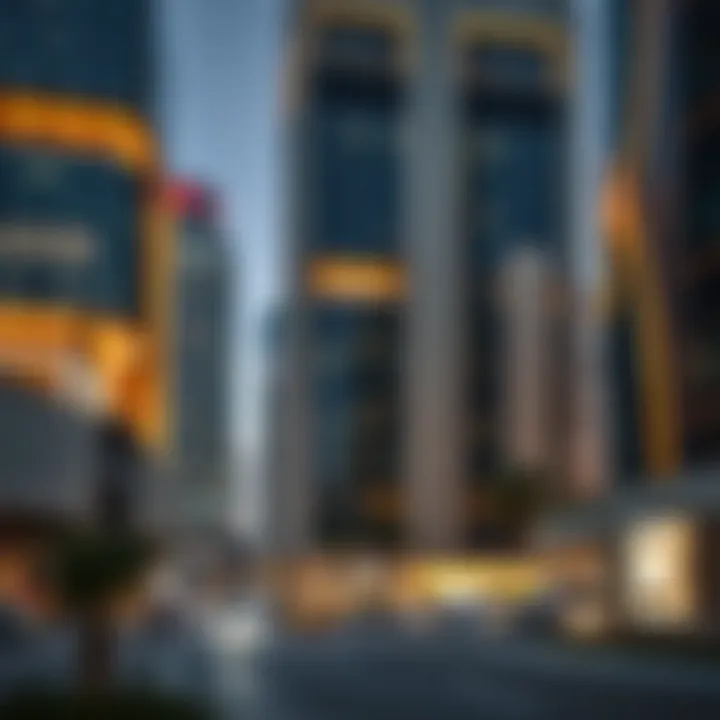
- Efficient Lighting: Installation of LED lighting throughout public spaces and buildings reduces electricity consumption significantly.
- Smart Building Management Systems: These monitor and control energy use, ensuring no energy is wasted—something that aligns beautifully with Dubai's ambitious sustainability goals.
Biodiversity and Urban Ecological Balance
With rapid urban development, maintaining biodiversity becomes a pressing concern. The Urban Tech District embraces this by incorporating natural elements within its design. Creating spaces where flora and fauna can thrive alongside human activity reflects a commitment to ecological balance.
Consideration for native plant species in landscaping, for instance, fosters habitats for local wildlife, which is crucial in urban areas. Green spaces, parks, and community gardens not only serve as recreational areas but also as vital habitats that represent a city’s biodiversity commitment.
Moreover, initiatives such as vertical gardens on building facades significantly contribute to urban ecology, enhancing air quality and providing insulation. Some notable practices include:
- Wildlife Corridors: Designed to allow animal passageways through urban areas, ensuring populations can thrive.
- Pollinator Gardens: Encourage bee and butterfly habitats within urban spaces, promoting essential ecosystem services.
"In an era where urban spaces are often seen as concrete jungles, the Dubai Urban Tech District promises a new narrative—one where technology and nature exist in harmonious balance."
The multifaceted approach to environmental considerations within the Dubai Urban Tech District reflects a profound understanding of sustainability. This strategy not only mitigates negative impacts but positions Dubai as a forward-thinking leader in urban planning, addressing the expectations of both its current residents and future generations.
The Role of Community in Urban Tech
The integration of technology into urban environments fundamentally shifts how communities interact and evolve. In the Dubai Urban Tech District, this shift is not just about physical infrastructure; it’s about weaving together the fabric of society in a way that celebrates diversity, fosters inclusion, and promotes shared prosperity. Community involvement is critical for ensuring that the smart technologies employed serve not just the tech-savvy but also those who may be less familiar with digital innovations.
Inclusivity and Social Impact
At the heart of the Urban Tech District lies a commitment to inclusivity. This means going beyond mere access to technology. It implies understanding the varied needs of the community, from young families to the elderly, and ensuring that everyone can benefit from advancements in urban technology. For instance, smart public transportation solutions are designed to be accessible for people with disabilities, offering tailored services that accommodate their specific requirements.
Moreover, social impact is measured not just by economic benefits but also by how these technologies enhance day-to-day life. When community members can engage with technological solutions that cater to their needs, such as environmental monitoring apps that allow them to report local pollution, they feel empowered. This empowerment contributes to a stronger, more resilient community.
Public Spaces and Accessibility Features
Public spaces are the beating heart of any urban district. In the Dubai Urban Tech District, these spaces evolve into smart environments that embody accessibility and user-friendliness. Parks and plazas have been designed with features that invite interaction while also encouraging diverse forms of use, including communal gardens that are tended to by residents.
Highlights of these public spaces include:
- Smart benches that offer charging stations for devices
- Interactive kiosks providing real-time information on public transport and local events
- Green areas optimized for environmental sustainability that double as community hubs
Access features like wider pathways and sensory-friendly design make it possible for everyone, including those with mobility challenges, to enjoy what the urban environment has to offer. Such designs ensure that public areas remain inclusive and beneficial for all.
Engagement Strategies for Residents
Creating a community isn't just about providing physical space for interaction; it’s also about fostering engagement. The District has developed unique strategies to ensure residents stay informed and involved. Engaging residents is vital for feedback, community strength, and a sense of belonging.
Some effective strategies include:
- Workshops and seminars focused on technology and urban living
- Community forums where residents can voice their concerns and share ideas
- Mobile apps that allow residents to participate in local polls and community decisions
"Engaging the community within the Urban Tech District ensures that the innovations implemented resonate with the actual experiences and desires of its inhabitants."
Through these approaches, residents not only become active participants in shaping their urban space but also contribute to a collective identity that emphasizes community cohesion. This model serves as a blueprint for other urban areas looking to incorporate technology while preserving and promoting vital communal ties.
As technological adoption continues to expand, the role of the community must not be overlooked. Fostering inclusivity, designing accessible spaces, and implementing effective engagement strategies are critical in ensuring that the Urban Tech District resonates with its inhabitants, and ultimately cultivates a thriving urban landscape.
Challenges and Criticisms of the Urban Tech District
The development of the Urban Tech District in Dubai has certainly paved the way for growth and innovation, yet it’s important to take a step back and examine the shadows cast by progress. Identifying the challenges and criticisms associated with such an ambitious initiative is crucial. They raise pertinent questions about its sustainability, economic impact, and social inclusiveness—all indispensable elements for a truly transformative urban environment.
Technological Limitations and Adaptation
Not all that glitters is gold, and in the realm of technology, limitations are often lurking just around the corner. The Urban Tech District aims to be a beacon of innovation, yet its reliance on cutting-edge technologies means it could become outdated faster than anticipated. For instance, while smart city technologies can improve efficiency, they also require constant upgrades. The rapid evolution of technology may leave certain infrastructures stagnating if they are not designed with adaptability in mind.
Moreover, integrating varied systems—like energy management, public transport, and waste disposal—is easier said than done. Imagine a city where different tech systems can’t quite communicate with each other—it's akin to having multiple translators that don’t understand one another’s languages. If solutions cannot adapt and grow along with the technological landscape, the very infrastructure that supports the district may become a bottleneck instead of a beacon.
Economic Viability and Investment Risks
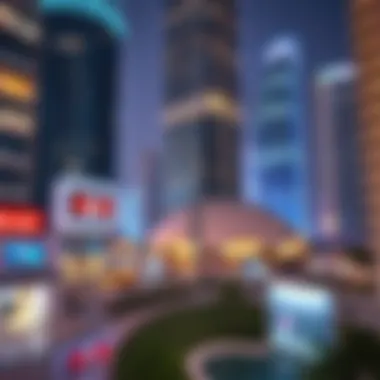

Investors are known for being keen-eyed, and the economic viability of the Urban Tech District comes under their scrutiny. Despite the allure of smart homes and high-tech commercial spaces, there exists the specter of investment risks. What if the expected return on investment does not materialize? Factors such as market volatility and changing consumer preferences could hurt the real estate sector.
Investments in the tech-heavy areas can lead to higher initial costs without a guaranteed payback. For instance, a high-rise equipped with state-of-the-art energy efficiency may not attract tenants willing to pay a premium despite its capabilities. The balance between innovation costs and tenant interest is delicate and fraught with uncertainty. Additionally, the longer these high-tech ventures take to establish themselves, the more pressure they create for investors as they weigh their options regarding future funding.
Policy and Regulatory Hurdles
As the old saying goes, "rules are meant to be broken," but in urban planning, stringent regulations often come into play. The Urban Tech District must navigate a complex web of policies and regulations that can be both a blessing and a curse. On one hand, regulations ensure the safety and well-being of residents, but they can also be roadblocks that hinder swift progress.
For example, obtaining permits for new construction often involves tedious procedures and lengthy bureaucratic processes. These delays can lead to increased costs and tarnish the ambitions of the district. Additionally, navigating environmental assessments or compliance with not just local laws but also international standards complicates matters further. As such, the friction between innovation and regulation can create a bottleneck, stunting the pace at which the Urban Tech District can evolve.
"Navigating regulatory hurdles is akin to walking a tightrope; one misstep can endanger the entire project."
In sum, while the Dubai Urban Tech District holds an immense promise, it is far from a smooth sailing endeavor. The challenges faced—be it technological limitations, economic concerns, or regulatory complexities—need to be unpacked carefully. Stakeholders should not only acknowledge these risks but actively seek adaptive solutions that align growth with sustainability and community enrichment.
Future Prospects of the Dubai Urban Tech District
The future of the Dubai Urban Tech District represents an exciting opportunity for everyone involved, from real estate agents to investors and homebuyers. This isn't just about advancing technology; it's about re-envisioning urban living through innovation. With Dubai positioned at the crossroads of investments and ground-breaking developments, understanding the district's future prospects is imperative for anyone looking to engage in this landscape.
As the city aims to diversify its economy and attract global talent, the Urban Tech District serves as a prototype for fostering sustainable growth. Key benefits arise from this initiative, including enhanced infrastructure, greater job opportunities, and a thriving ecosystem that supports startups. Here, we’ll dig into elements that inform the long-term vision and goals meant to steer this development.
Long-Term Vision and Strategic Goals
Embracing a long-term vision means that stakeholders must align their goals with the aspirations of the Urban Tech District. This pivotal planning process focuses on making the district a beacon of modern urbanity. A few of the primary goals include:
- Integration of Smart Solutions: From the outset, the aim is to weave technology into everyday urban life, creating smarter public transportation systems and enhancing emergency services.
- Sustainability Commitment: Environmentally, every decision revolves around making Dubai more sustainable. Renewable energy sources will be abundant and efforts to minimize waste will be prioritized.
- Fostering Innovation: The district is intended to ignite fertile grounds for creative minds and innovative businesses. Creating incubators and accelerators will increase the chances of groundbreaking companies sprouting from this environment.
Thus far, these goals present a far-reaching context that shapes the district’s growth trajectory into a future defined by intelligent infrastructure and community engagement.
Positioning Dubai in the Global Tech Landscape
Dubai's Urban Tech District is not just aiming for local impact, it's also about making waves on a global scale. In this tech-savvy era, cities are competing for recognition as global leaders in innovation. Dubai aspires to stand tall by:
- Creating Collaborative Network: By establishing partnerships with leading global tech firms and educational entities, Dubai positions itself as a collaborative hub fostering knowledge sharing and innovation.
- Promoting Diverse Economic Growth: This district's growth will promote diverse sectors beyond oil, such as finance, healthcare, and media. Attracting multi-sector investments can spread economic risks and manifest greater opportunities.
- Driving Talent Acquisition: To thrive in a competitive global tech landscape, Dubai needs to attract a skilled workforce. This involves creating enticing living conditions and work environments in the Urban Tech District.
“The Urban Tech District is not merely a project; it is a vision meant to elevate Dubai on the world stage by harnessing technological advancements.”
Case Studies and Success Stories
Real examples of progress fuel confidence in both current and future stakeholders. Noteworthy case studies spotlight ambitious undertakings within the Urban Tech District:
- The Dubai Data Initiative: This is a program committed to harnessing the power of data to drive decision-making at a city level. It has led to tangible improvements across various sectors, creating a data-centric culture.
- The Dubai Solar Park: Servicing the district with renewable energy, the solar park is set to be amongst the world's largest, showcasing how Dubai is placing sustainability at the forefront while supporting urban tech innovations.
- Incubators Funding Success Stories: Various startups have emerged successfully from incubators within the district. They have not only thrived but attracted additional funding which showcases the capital's commitment to fostering an entrepreneurial ecosystem.
The End: The Legacy of the Urban Tech District
As we reflect on the journey of the Dubai Urban Tech District, it becomes clear that this initiative is not merely a collection of technologies and infrastructures, but a blueprint for a sustainable and inclusive urban future. The legacy being crafted here will resonant beyond its initial phases. The integration of advanced technologies into the urban fabric epitomizes a shifting paradigm in how cities can evolve.
Summarizing the Transformative Experience
The Dubai Urban Tech District stands out as a prime example of how innovation can catalyze transformation. It is a place where the collective vision of urban planners, technologists, and community stakeholders converge. By employing smart city frameworks and sustainable design principles, this district doesn’t just aim for technological advancement; it actively works towards improving residents' quality of life.
Key points that encapsulate this transformative experience include:
- Enhanced Connectivity: The district fosters seamless transportation links and is designed for ease of movement, ensuring that residents and visitors can navigate with minimal hassle.
- Eco-Friendly Solutions: Water conservation measures and energy-efficient systems are at the forefront, showing how technology can harmonize with nature. This creates a living environment that is essentially self-sustaining.
- Community-Centric Design: Public spaces are crafted not just for functionality but also for interaction—encouraging community engagement, cultural expression, and social inclusivity.
By encapsulating these elements, the legacy of the Urban Tech District not only highlights the improvements made but also sets a standard for future developments globally.
Reflections on Future Urban Developments
Looking ahead, the implications of the Dubai Urban Tech District extend far beyond its own borders. It poses a challenge to traditional urban development strategies, advocating for a new way to approach city life. The potential for replication in other cities is vast; urban environments worldwide can learn from the principles instilled here.
Several considerations emerge:
- Adaptability of Technology: As we continue to innovate, there's a need for adaptable technology that can grow and evolve with urban needs.
- Importance of holistic planning: Future developments must integrate social, economic, and environmental perspectives to archive comprehensive urban resilience.
- Role of Policy Frameworks: Strong governance will support sustainable integration of technology in urban systems, ensuring these innovations benefit all citizens.
"When we talk about the future of cities, we talk about creating spaces where humans and technology coexist harmoniously—this is the legacy of the Dubai Urban Tech District."
As we set our sights on future urban developments, may we build on this knowledge, fostering not just growth but meaningful, sustainable progress in urban living.







